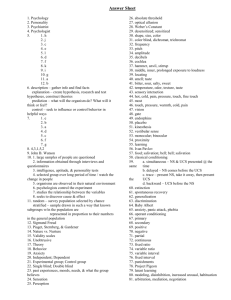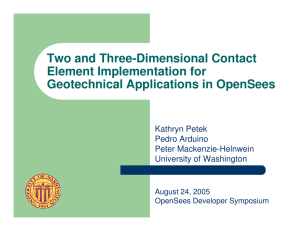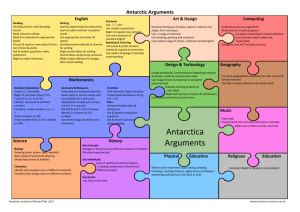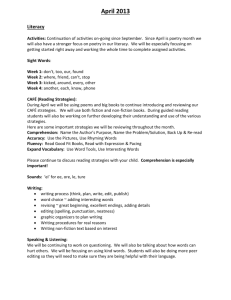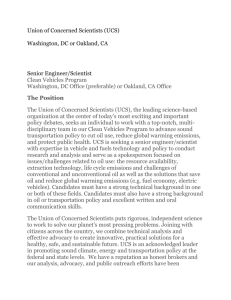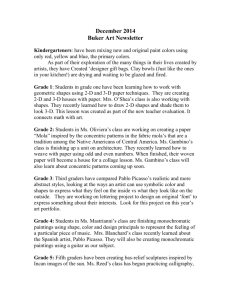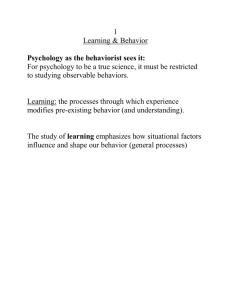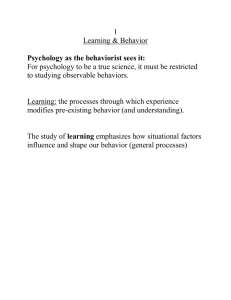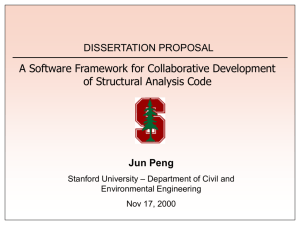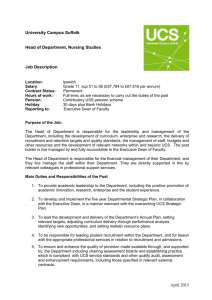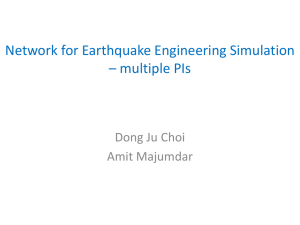Analysis of UC Science Building by OpenSEES
advertisement
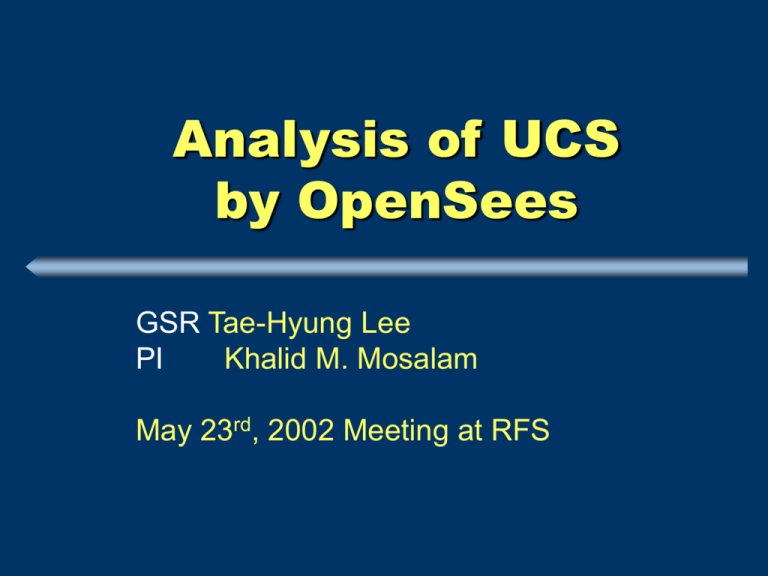
Analysis of UCS by OpenSees GSR Tae-Hyung Lee PI Khalid M. Mosalam May 23rd, 2002 Meeting at RFS Objectives • Conduct and verify a 2-D nonlinear time history analysis of UCS using OpenSees • Develop floor responses to be utilized for the UCB and UCI shake table tests of the building contents • Assess the importance of the different sources of uncertanties on the structural response • Extend investigation to 3-D modeling including multi-directional ground motion Current Status • 2-D structural model completed for the UCS building • Time history results (as absolute and relative floor displacements and accelerations and mid-points of all floors) are available for two levels of seismic hazard (50% and 10% in 50 years) • Similar results will be available for the third level of seismic hazard (2% in 50 years) by the end of July. Future Tasks 1) Verification: A similar shear wall building where response data are available will be analyzed using the same modeling approach in OpenSees An example is the 9 story Robert A. Millikan Library Building at Caltech [McVerry 1979] Future Tasks (Cont.) 2) Assess Importance of Uncertainties: The following five sources will be considered a) Spectral acceleration b) Mass c) Damping d) Force-deformation characteristics of the different elements, e.g. in terms of moment-curvature relations e) Soil/foundation properties Future Tasks (Cont.) 2) Assess Importance of Uncertainties (Cont.): The objective is to conduct similar study to that of (Porter et al. 2002, Earthquake Spectra) with focus on structural response parameters (rather than costs) and their sensitivity to modeling issues and input intensities. The importance of uncertainties will be assessed by developing a “tornado diagram” using the idea of “swing” estimation. Future Tasks A methodology has been developed using SFEM to generate probabilistic moment-curvature or interaction diagrams of RC elements [Lee and Mosalam, 2002, Computers and Structures] (Cont.) Future Tasks (Cont.) Several verification studies were conducted Future Tasks (Cont.) Some results of interaction diagrams Future Tasks (Cont.) 3) Extension to 3-D: Modeling structural elements in longitudinal as well as transverse direction. Subject the building to simultaneous components of the ground motions. Investigate variations of floor response parameters within the floor space.
